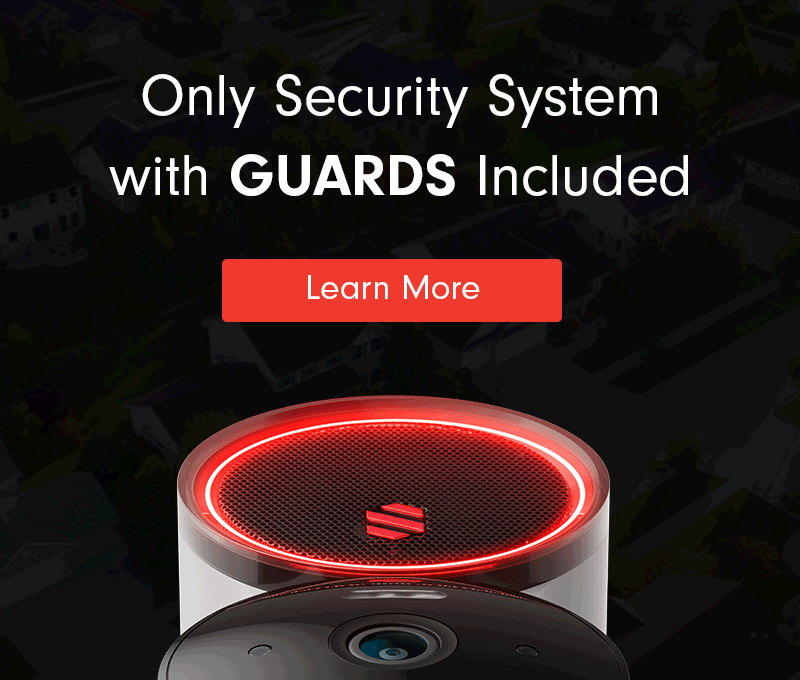Bullet vs. Dome Cameras
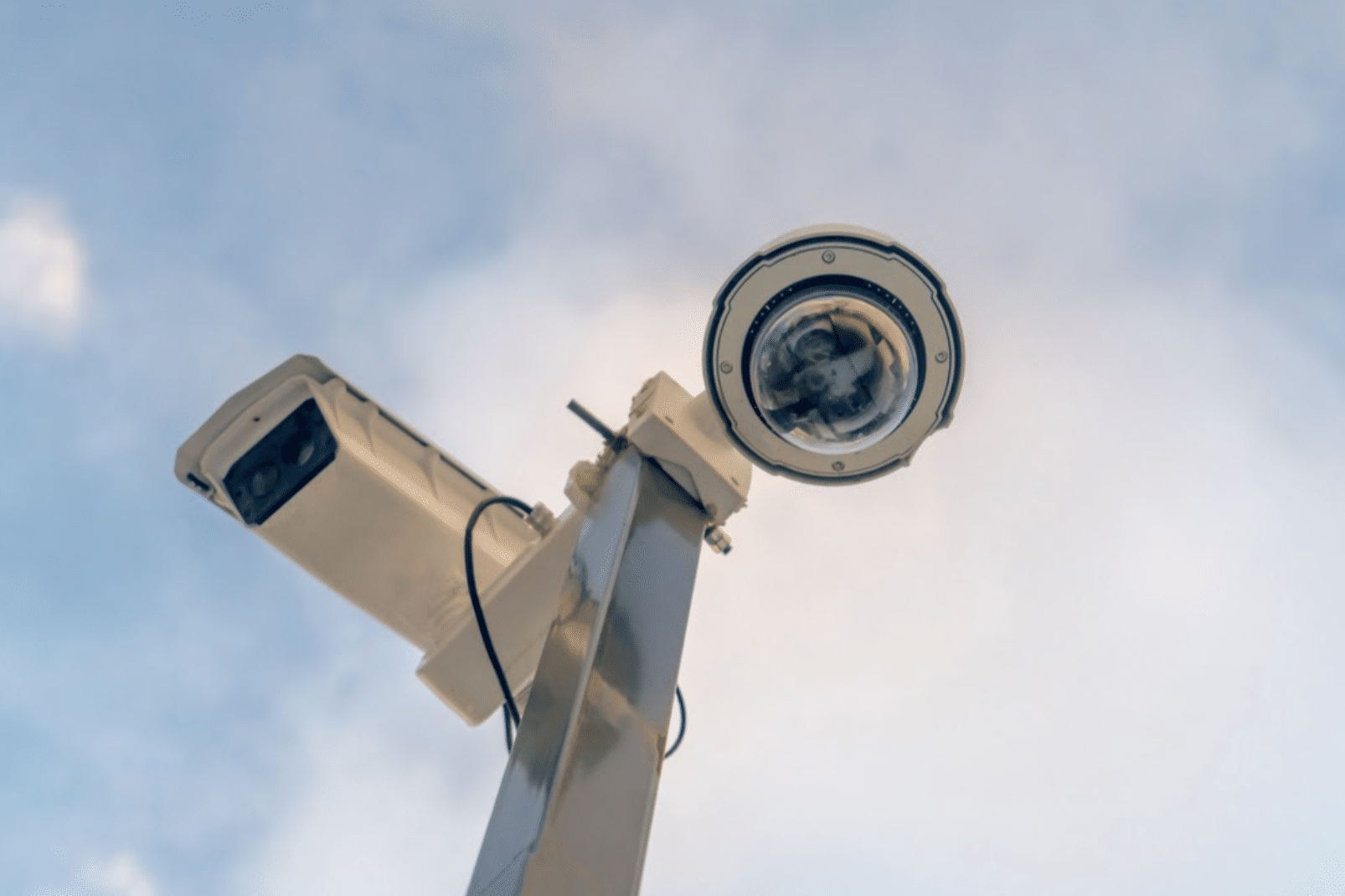
Coke or Pepsi? The Beatles or The Rolling Stones? Hot or cold? It often seems like everything boils down to two main options. Security cameras are no different. There are a handful of other options—doorbell cameras, hidden nanny cams, etc.—but most of the time you’ll be considering bullet vs. dome cameras.
But what exactly are the differences between dome and bullet cameras? Is one better than the other, or are they equally suited for the job? Does it ultimately come down to personal preference and aesthetics? How do you choose the right option?
Let’s dig deeper.
The Importance of Video Surveillance
Before we dive in, let’s take a minute to review the case for cameras in general.
The smart home technology sector is expected to be worth about $31 billion by 2023. Security cameras and their corresponding mobile apps will be a large chunk of that.
Why? Because cameras and the ability to monitor your property—either yourself, via paid professionals, artificial intelligence, or some combination therein—are affordable and effective ways to protect what’s yours.
How effective? Consider:
- A property without some sort of security system is 300% more likely to get robbed than a home or business with one
- Burglary accounts for $3.1 billion in damages every year
- A little more than half of burglarized properties are hit again within about 6 weeks
- 60% of surveyed burglars will move on to the next place when they see a property has an installed security system
- Surveillance cameras at the town or city level can reduce crime by up to 50%
- 50% of burglars skip a property if they notice outdoor security cameras
- Property crime accounts for 85% of all crime in the US
- There are over 3,000 burglaries in the US every single day
In short, there are a lot of burglaries taking place, and the presence of a security system with cameras makes your property safer, better protected, and much less appealing to a would-be criminal.
So should consider security cameras in general? The answer is an emphatic yes.
But what kind? Bullet or dome cameras?
Bullet vs. Dome Cameras: The Basics
As the name implies, bullet cameras are elongated cylinders (or rectangles) with a camera lens at one end. In that sense, they resemble a bullet. They’re probably the type of camera you’re most used to seeing in public and private spaces. They are also sometimes called a lipstick camera. The older of the two styles, a bullet camera is designed to point directly at whatever area you want covered, in much the same way you would point a gun at its target.
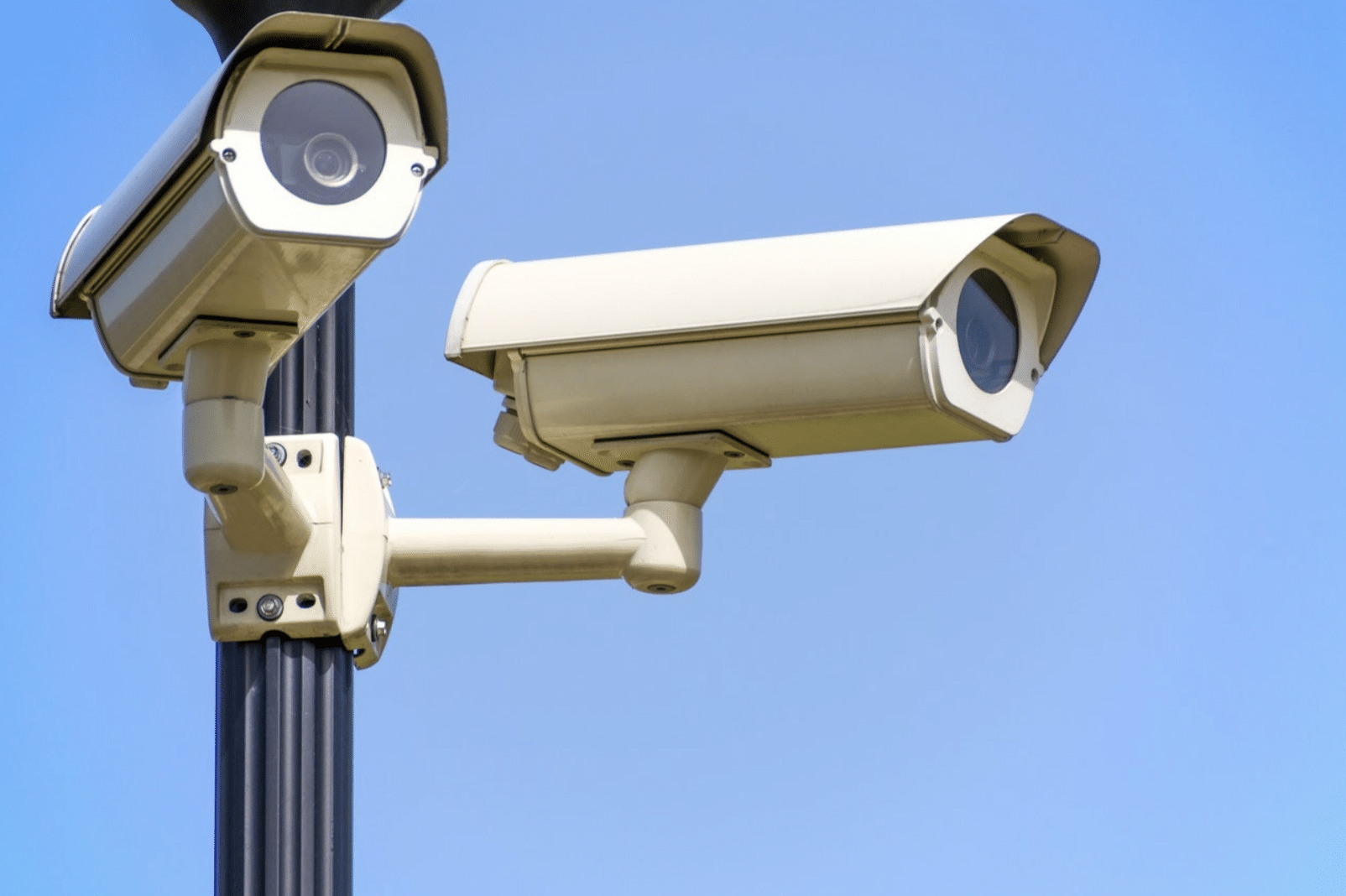
Alternatively, you could opt for a dome camera. Named after their shape, the camera itself is protected under a glass or plastic dome. More modern in design and capabilities, dome cameras are routinely installed indoors and on the ceiling. However, you could put them on a wall or an outdoor location (if properly weatherproofed).
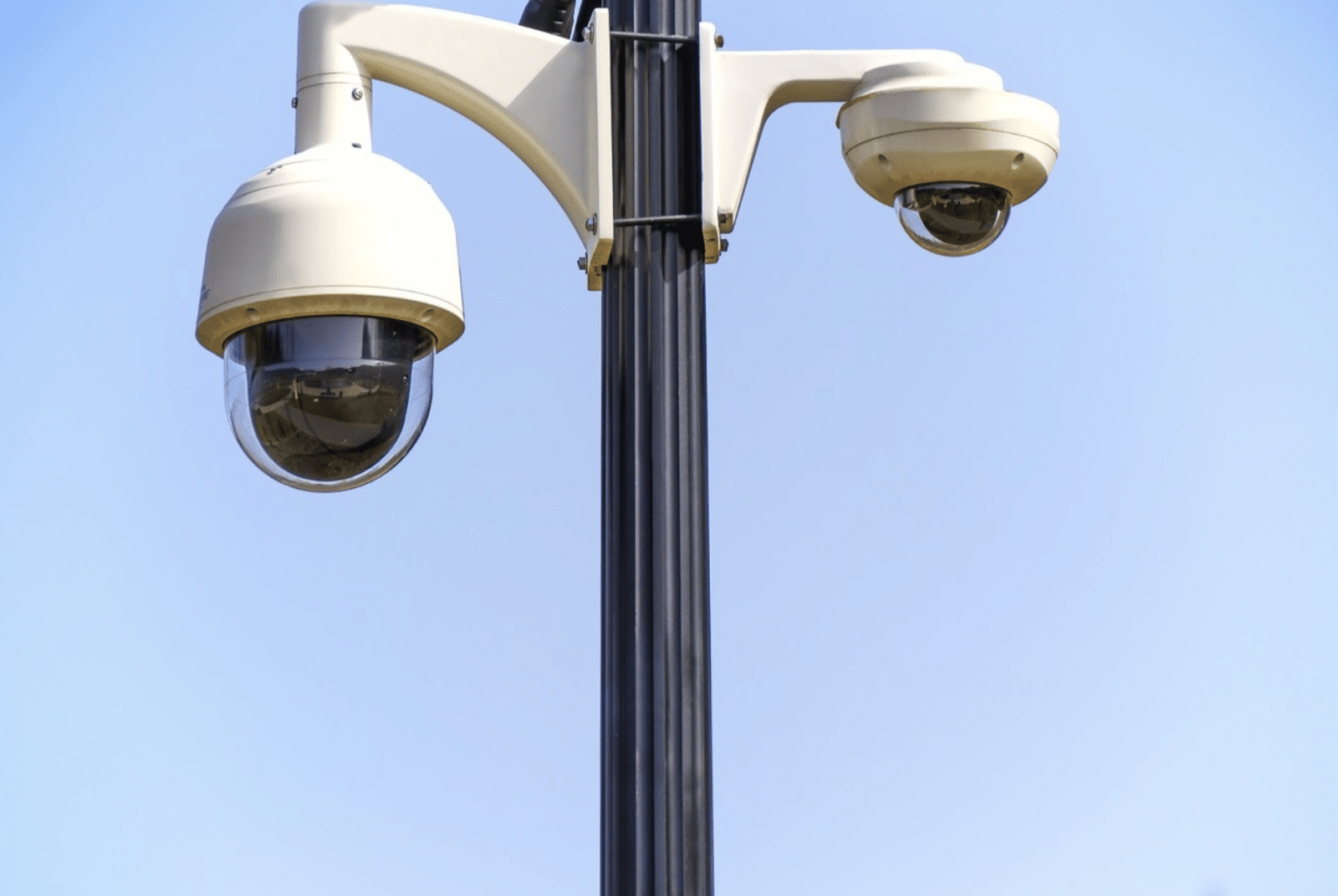
Differences Between Bullet vs. Dome Cameras
When comparing bullet vs. dome cameras, there are a few important differences to consider in terms of form and function.
Design and Visibility
The most obvious distinction between the two camera types is how they look.
Bullet cameras are hard to miss. Their distinct shape makes them extremely visible to criminals, customers, and passers-by alike. The good news is that this visibility deters potential intruders from proceeding with criminal activities. However, you may have to sacrifice a clean, peaceful aesthetic when you install these prominent cameras.
Dome cameras are more discreet and blend in with their surroundings. This allows for more undetected surveillance if that’s your goal. Criminals might not spot them as easily, which means you could lose some amount of crime deterrence. However, many of them have slightly tinted domes that make the actual camera practically invisible to anyone wanting to know which direction it is facing. In other words, if a crook spots the camera, they’ll be careful because they don’t know if they’re on camera. The sleek design makes them ideal for spaces where appearance is important, such as inside a customer lobby.
Viewing Angles
Perhaps the greatest difference between dome and bullet cameras is the field of view. A security camera’s field of view, also known as FOV or viewing angle, refers to the amount of a scene it can capture at one time. The wider the FOV, the more area gets recorded. Narrow FOVs record a smaller area but may be able to capture finer details.
The shape of dome cameras gives them the advantage of wide viewing angles. This allows them to cover more space and capture more activities. A dome camera can have a wide-angle lens that covers anywhere from 100 degrees all the way to a full 360 degrees.
Bullet cameras generally capture a narrower FOV, focused on what is directly in front of them, like a front door. However, they typically get a more detailed picture. With stationary cameras, you may need multiple bullet cameras to cover the same space that a single dome camera can protect.
One way to increase a camera’s viewing angle is to add pan-tilt-zoom (PTZ) functionality. PTZ cameras can freely move, pivot, and zoom in on areas of concern. Because of the space within the casing, dome cameras can often be configured as PTZ cameras. Not every bullet camera is a PTZ camera, but this functionality can give it a viewing angle comparable to a dome camera’s.
Range of Vision
Think of a camera’s range of vision as the opposite of its viewing angle. When a camera covers a wide area, it can’t capture faraway details as easily. But a camera that covers a narrower area can “see” minute details the way a pair of binoculars does.
Bullet cameras have a longer range of vision, allowing users to zoom in closer and capture more detailed images such as license plate numbers and facial features. A dome camera sacrifices some range to give the user a wider angle.
Resistance to Vandalism and Weather
Dome cameras are resistant to vandalism because of their protective coverings. There is little to grab or twist. Bullet cameras are easier to vandalize or disable. If you use bullet cameras, be sure to put them in a high, hard-to-reach location.
Both dome and bullet cameras are weather-resistant and suitable for the outdoors. However, bullet cameras can capture more when inclement weather occurs because they have flaps that extend over their lenses. This prevents interference from snow, rain, and glare.
Installation
Do you care about the ease of installation? If you’re installing the cameras yourself, you probably care a lot.
Bullet cameras are slightly easier to install than dome cameras. They typically attach directly to a wall, though they can be installed on ceilings or independent poles/structures. If your bullet camera uses a mounting arm, adjusting the positioning is a straightforward process.
By comparison, a dome camera is usually attached to a ceiling or eave, but you’ll sometimes find them on walls, too. Because of the housing construction, an incorrectly installed dome camera may gather harmful moisture inside the camera’s body. In addition, if the viewing angle isn’t quite right, you’ll likely have to reinstall it completely to fix this issue.
No matter which type of camera you choose, you can always take advantage of professional security camera installation. Expert installers will choose the best camera locations for optimal surveillance while taking your property’s unique needs into account.
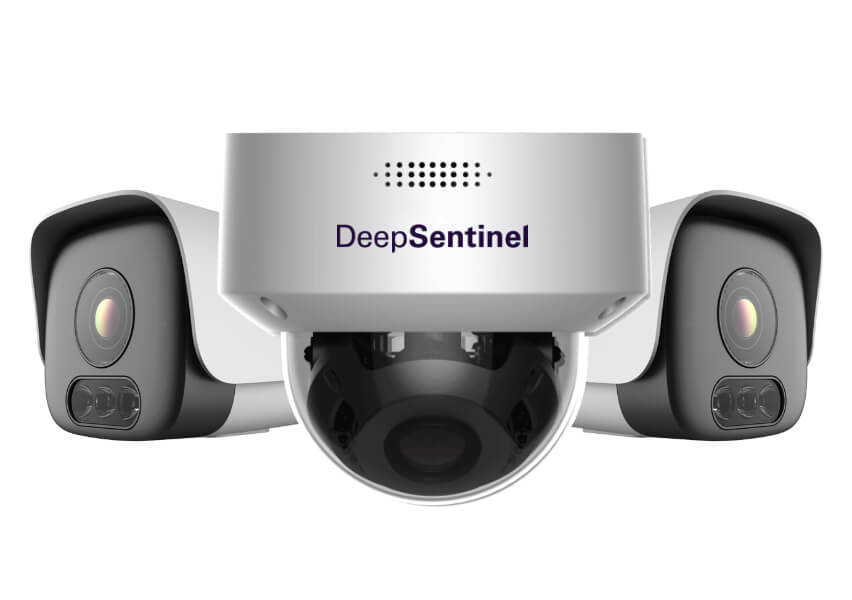
Similarities of Dome and Bullet Cameras
When it comes down to it, cameras are cameras, whether bullet or dome. Both camera types are great for protecting properties. To that end, they share many similarities and features.
Ideal Location
No matter what you decide in the bullet vs. dome camera debate, you can use your chosen cameras virtually anywhere. Both styles are suitable for outdoor use, though you’ll have to be extra careful with dome camera installation to ensure that no moisture can enter the housing.
You’ll usually find bullets attached to vertical structures (walls) and domes attached to horizontal structures (ceilings). However, that doesn’t have to be the case. With the right hardware and know-how, you can install either camera type on a wall, ceiling, overhang, pole, or other structure.
Night Vision
Would you like your camera to spot criminals after dark? We thought so.
Both bullet cameras and dome cameras are capable of offering night vision. Security cameras with night vision use special filters to help the camera “see” in low-light conditions much better than the human eye can see. With a high-tech camera, you’ll be able to get a full-color picture of the scene even in the darkest of nights.
Audio Capabilities
Security cameras with audio do more than simply grab a good picture. Depending on the specific camera, they can also record sound at the scene and even allow someone to interact verbally with suspects.
Dome and bullet cameras both feature excellent audio capabilities. One-way audio lets you hear (and record) sound at the scene of the crime. With two-way audio, users can hear what’s happening on their property and speak to potential intruders.
AI Technology
Now, this isn’t a feature you’ll find with every security camera company. But if you’re talking about Deep Sentinel cameras, each comes packed with crime-fighting artificial intelligence. Dome or bullet, you get the power of AI that can detect potential threats like trespassers and differentiate them from normal occurrences like cars passing by.
Live Monitoring
Similarly, Deep Sentinel offers real-time camera monitoring services for all system shapes and configurations. When the system’s AI detects a potential threat, a live security guard takes over to evaluate the situation and respond accordingly. The monitoring service is equally effective for bullet and dome cameras, as well as the other options Deep Sentinel offers, like wireless security cameras and turret cameras.
Deep Sentinel 4K Dome Camera
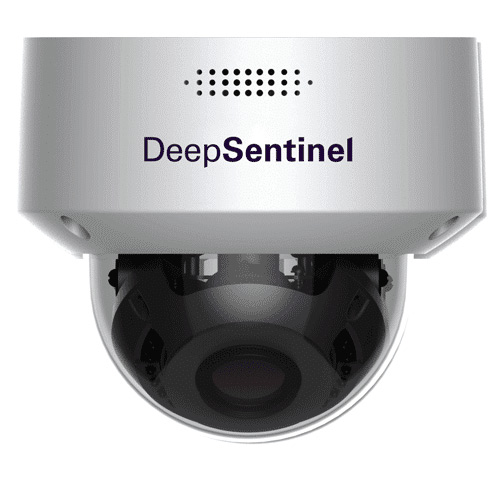
- 4K Ultra HD (3840 x 2160) @ 20 FPS
- 89° Viewing Angle
- External Speaker Support
Deep Sentinel 2K Dome Camera

- 2K Ultra HD (2560 x 1440) @ 30 FPS
- 112° Viewing Angle
- External Speaker Support
Deep Sentinel 2K Bullet Camera
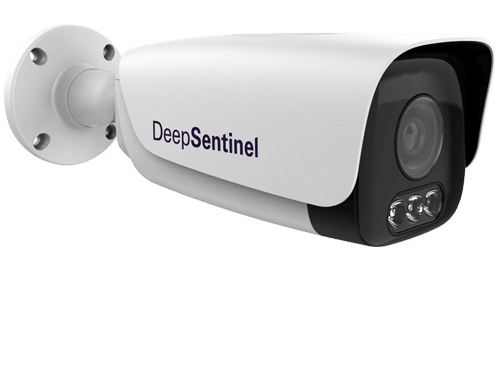
- 2K Ultra HD (2560 x 1440) @ 30 FPS
- 114० Viewing Angle
- External Speaker Support
The Case for Bullet Cameras
The classic bullet camera is a battle-tested design with a number of advantages.
- Usually more affordable than other styles
- Relatively easy to install, generally just requiring four screws at its base
- Quick and easy to reposition when mounted on an adjustable elbow or swivel joint
- Conspicuous design helps to deter crime before it happens
- Less prone to interference from glare and inclement weather like rain or snow
- The longer range makes them ideal for zooming in on finer details like license plates and faces
- More reliable night vision than a dome camera because of less infrared bounce-back
These cameras are the superior choice for DIYers, with straightforward installation and maintenance requirements.
That said, the design also has a few cons. For one, a bullet camera is easier for criminals and vandals to disable. Individuals can hit them, pry them off their joints, pull them, turn them away, or cover them. Installing them sufficiently high off the ground makes that much more difficult, but not impossible. Also, because of their shape and the heat they generate, bullet cameras may attract birds and other small animals that can interfere with or block the lens.
The Case for Dome Cameras
Dome cameras offer some advantages over other shapes for the right user.
- Durable, discreet, and long-lasting
- Smaller, sleeker, and more contemporary in appearance, making them ideal for inside a home or business where you don’t need people to know they’re being watched or you don’t want a camera standing out like a sore thumb
- Difficult for criminals to know exactly where it’s watching, which makes them more cautious
- Impossible to redirect or turn away
- Most are vandal-proof, with a strong metal casing and impact-resistant dome
- Wide variety of sizes and features
- Birds-eye vantage point
- Shape is unattractive to critters that might interfere with the video footage
If you need something sleek and tamper-proof that can see a wide area, a dome camera is an excellent choice.
But they’re not perfect for everyone, of course. They tend to be more expensive and labor-intensive, and the glass can quickly get dirty from dust and fingerprints. Without the benefit of a lens flap, dome cameras are more prone to interference from the sun or other light sources if not installed in a suitable location. An improperly sealed dome may allow moisture to get at the sensitive inner parts. Finally, they may suffer from some degree of IR bounce back—making their night vision less crisp and precise—if not built and installed properly.
How to Choose Between Bullet vs. Dome Cameras
In terms of specs, there’s not a lot of difference. You can usually get the same quality, size, features, and resolution in either model.
Ultimately, weight bullet vs. dome comes down to your specific needs.
- Where is it going to be installed? Bullet cameras are usually better outside and dome cameras are usually better inside.
- What does it need to cover? A single door or point-of-access is often better with a visible bullet camera pointed directly at it, while a larger area such as a lobby or bedroom benefits from the wider field of view provided by a dome camera.
- How comfortable are you with installing it yourself? Confident and accomplished users should have no problem with the dome, while those with less experience may want the simplicity of the bullet. (Or turn to professional installers.)
- Do you want it to blend in or stand out? Bullet cameras are hard to miss, while dome cameras can easily disappear into the background.
- Are there privacy concerns? If you share a fence in the backyard with your neighbor, for example, a wide FOV such as you’d get from a dome camera may inadvertently capture their family and activities. A bullet camera’s narrow FOV avoids this issue.
Any security camera is better than none. From a criminal’s perspective, security cameras make your property less appealing and harder to access without being caught. The more risk to the would-be burglar, the less likely they are to even try. And few things increase the risk factor more than security cameras.
Which camera you choose is up to you. They both have their pros and cons. The differences between bullet vs. dome cameras are minor, and the similarities and benefits both provide are profound. And if you’re still not sure, talk to a professional.
Stay Safe with Deep Sentinel Dome and Bullet Cameras
Installing any security camera provides peace of mind. Installing the right security camera for your needs? That’s priceless.
Deep Sentinel offers both dome and bullet cameras, along with wireless and turret options, to suit property owners of all kinds. Every Deep Sentinel system comes with live security camera monitoring, artificial intelligence, and the fastest response times in the business.
If you’re still unsure about which camera shape is right for you, browse Deep Sentinel PoE security camera systems and wireless security cameras to compare hardware options. Or call 833.983.6006 to talk to a security expert about your property’s unique needs.
Need a Solution that Prevents Crime?
Deep Sentinel is the only security technology that delivers the experience of a personal guard on every customer’s home and business. Visit deepsentinel.com or call 833.983.6006.

